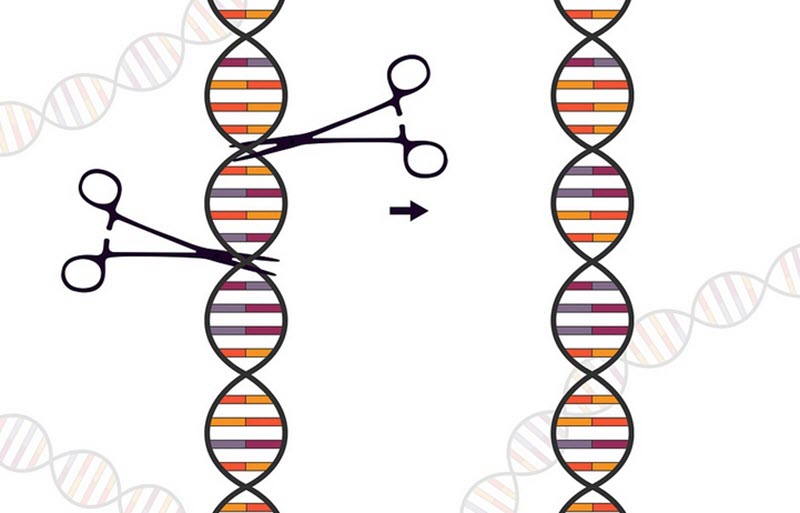The acronym CRISPR stands for Clustered Regulatory Interspaced Short Palindromic Repeats.
CRISPR is a family of DNA sequences found in the genomes of prokaryotic organisms such as bacteria and arachea. The sequences are derived from DNA fragments of bacteriophages that previously infected prokaryot organism. A bacteriophage is a virus that infects and replicates within bacteria and arachea.
The prokaryotes use CRISPR to detect and destroy DNA from similar bacteriophages when they encounter them. This process is an important part of the organisms resilience against this type of viral infection – it is a form of acquired immunity.
Among the sequenced bacteria genomes, CRISPR has been found in roughly 50%.
Among the sequenced archae genomes, CRISPR has been found in nearly 90%.

What is Cas9?
Cas9 is hosrt for CRISPR-associated protein 9.
Cas9 is an enzyme that utilizes CRISPR sequencing as a guide to recognize and cleave specific strands of DNA.
CRISPR-Cas9 technology
In the lab, CRISPR-Cas9 technology is used to edit genes within organisms. It relies on Cas9 enzymes working together with CRISPR sequences.
This technique has quickly become very important in the field of biological research, including medical research and development of biotechnological products.
In 2020, Emmanuelle Charpentier and Jennifer Doudna shared the Nobel Prize in Chemistry for having developed the CRISPR-Cas9 genome editing technique.
Early research
- In 1987, by Yoshizumi Ishino and their team at Osaka University, Japan accidently cloned part of a CRISPR sequence while working with Escherichia coli.
- In 1993, PM Groenen and their team in the Netherlands published two articles about a cluster of interupted direct repeats in Mycobacterium tuberculosis.
- In the late 1900s, Francisco Mojica at the University of Alicante in Spain observed repeats in Haloferax and Haloarcula species. This was when transcription of the interupted repeats where noted for the first time, and Mojica´s publications included the first full characterization of CRISPR.
Early applications
In 2005, the yogurt researcher Rodolphe Barrangou made an intersting discovery while working for the Danish food company Danisco. He noticed that after dealing with phage challenges, Streptococcus thermophilus will develop increased phage resistance. He was also able to show that this increased resistance is due to the bacterium incorporating additional CRISPR spacer sequences.
Danisco used these finds to develop phage-resistant strains of Streptococcus thermophilus for their yoghurt production. The technique became in much more widespread use once Danisco had been aquired by the international food-giant DuPont, which is a major player on the global dairy culture market.
CRISPR gene editing
CRISPR gene editing is today used medically and by the food and farming industries, and it is also a vital tool for a lot of medical research and other scientific research within the field of biology.
Here are a few examples:
Food
CRISPR technology is used to immunize bacterial cultures necessary for food preparation, e.g. bacteria used to turn milk into yoghurt.
Farming
CRISPR technology is used to make certain crops more resilient to drought, enhance yield and boost nutritional values.
Fuel
CRISPR gene editing technology is used to modify yeast for the production of biofuel.
Health & Medicine
- In 2019, CRISPR was used to experimentally treat a patient with sickle cell disease. (Sickle cell disease is a group of genetic diseases.)
- In 2020, significant progress was made on an experimental HIV treatment based on CRISPR gene editing. When tested on mice, 60-80% of the integrated viral DNA was removed, and some mice became completely HIV free after being treated with a combination of CRISPR technology and LASER ART anti-retroviral therapy.
- In 2020, CRISPR-modified virus was injected into a patient´s eye in an attempted to treat a rare inherited eye disease called Leber congenital amaurosis.
- It is possible to use CRISPR gene editing to modify mosquitoes to make it impossible for them to transmit malaria parasites.
Research
CRISPR gene editing technology is used to functionally inactivate genes in human cells and cell lines.
